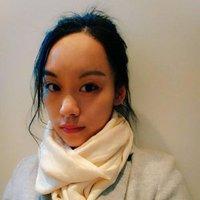Parisian fashion powerhouse Christian Dior is being harshly criticized on social media for its appointment of Chinese actress Yang Ying, aka Angelababy, as its first brand ambassador in China.
China’s ‘Kim Kardashian’ Sparks Controversy as Dior’s New Brand Ambassador

Over the last decade, collaborations between luxury brands and contemporary artists have gone beyond mere artistic partnerships towards a new kind of luxury branding.
PARIS – Art and fashion have always developed side by side, for fashion, like art, often gives visual expression to the cultural zeitgeist. During the 1920s, Salvador Dalí created dresses for Coco Chanel and Elsa Schiapparelli. In the 1930s, Ferragamo’s shoes commissioned designs for advertisements from Futurist painter Lucio Venna, while Gianni Versace commissioned works from artists such as Alighiero Boetti and Roy Lichtenstein for the launch of his collections. Yves Saint Laurent’s vast art collection, recently auctioned at Christie’s in Paris, testified to his great love of art and revealed the influence of a variety of artists on his own designs.
In the 1980s, relationships between luxury brands and artists were advanced when Alain Dominique Perrin created the Fondation Cartier. In the Fondation Cartier pour l’Art Contemporain, a book marking the foundation’s 20th anniversary, Perrin says he makes “a connection between all the different sorts of arts, and luxury goods are a kind of art. Luxury goods are handicrafts of art, applied art.”
The Fondation Cartier pour l’Art Contemparain building in Paris
Parisian fashion powerhouse Christian Dior is being harshly criticized on social media for its appointment of Chinese actress Yang Ying, aka Angelababy, as its first brand ambassador in China.
Yang Ying, who has been called the “Kim Kardashian of China” (and spent $31 million on her wedding—more than Kardashian spent on hers), said in a video that Dior is her “favorite brand.”
Almost immediately upon publication on Dior’s official Weibo and WeChat accounts on April 28, the news exploded on China’s social media. By the time of this publication, the number of comments under the original Weibo post topped 50,000 (and it’s been reposted more than 750,000 times), dwarfing Dior’s average Weibo engagement.
“Shocking!” wrote “William sabixi” on Weibo. “Why did Dior decide to destroy its high-end public image?”
Another commenter, “BETTERemma,” wrote: “Does Dior really believe Angelababy can boost its sales? The brand should really do more market research when making decisions like this one.”
The Controversy Stems from Claims of Plastic Surgery
The discontent by the Chinese online community with Yang’s new role at Dior stems in part from the controversy surrounding reports that she had had plastic surgery.
In 2012, Ruili, a beauty clinic in Beijing, published an article on its website claiming Yang had had plastic surgery. Yang sued the clinic for defamation and the case dragged on in court for several years, resulting in a bizarre public examination of the actress’s face at a plastic surgery hospital in Beijing. The hospital’s chief claimed her looks were authentic, saying, according to the BBC, “Baby’s entire head and facial bones do not have any signs of incisions.”
Critics also contend that Yang, who rose to fame in 2014 on the reality television show Hurry Up, Brother and who started a venture capital fund (AB Capital) for investments in women’s lifestyle start-ups, pales in comparison to the brand’s roster of previous international ambassadors, including A-list Hollywood celebrities Charlize Theron and Natalie Portman.
"It’s time for me to say goodbye to the brand that I’ve loved for more than 10 years."

Dior has worked closely with another Chinese address Liu Yifei in the past, which has aroused the curiosity among Chinese people why Liu was not chosen as the brand’s ambassador.
Some consumers have even pledged to stop purchasing Dior products as a result of Yang’s appointment. “It’s time for me to say goodbye to the brand that I’ve loved for more than 10 years,” said one commenter.
The Brand’s Response, or Lack Thereof
So far, the brand has been mum over the fierce reactions online and since that initial announcement, there have been no further posts about Yang on the official account, which has featured instead several commercials with the supermodel Bella Hadid.
The hubbub is similar to one experienced years ago by another French luxury brand, Chanel, when it appointed Hong Kong-born American singer Coco Lee as its regional ambassador. Consumers in Hong Kong at the time thought Lee’s public image was too disgraceful to represent the brand. The furor caused Chanel to finally end its relationship with Lee. Swiss watchmaker Jaeger LeCoultre’s recent collaboration with sensational online blogger Papi Jiang met with similar criticism.
But other collaborations of this kind have fared better with young Chinese audiences. Burberry’s collaboration with Chinese-born Canadian boy band star Kris Wu was popular as was singer Luhan as the face of Cartier.
The announcement of the arrangement with Yang came just days after luxury conglomerate LVMH Moët Hennessey bought out minority shareholders at Christian Dior for $13 billion.
Originally posted on Jing Daily

Associate Editor, Jing Daily
Yiling (Sienna) Pan is Associate Editor for Jing Daily. She started her journalism career at Reuters’ Shanghai Bureau in 2014, where she reported on China’s financial markets and economy. She is passionate about telling stories about China’s current social, cultural, and economic transformation.


